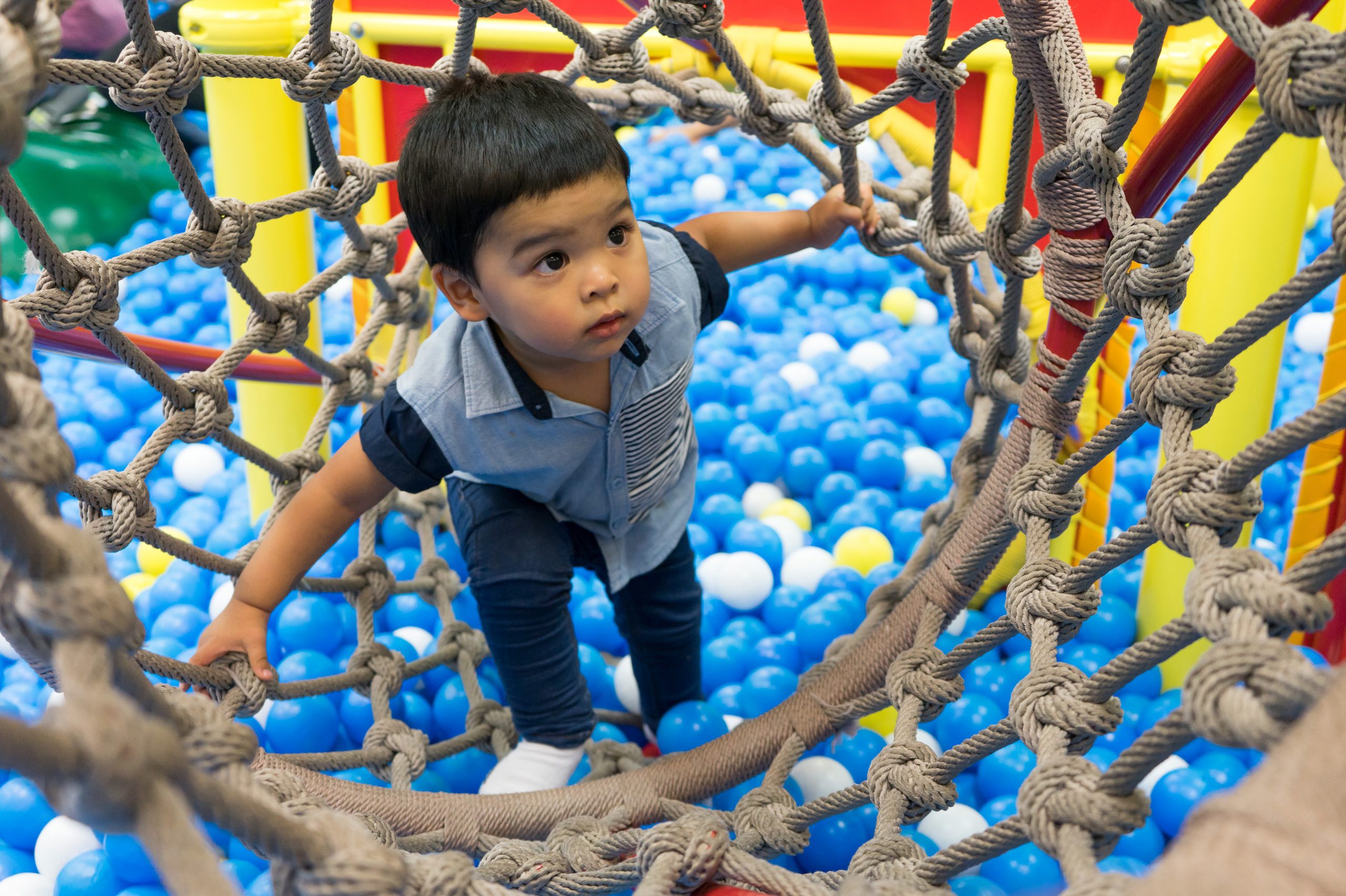There are few things as heartwarming as seeing a child gleefully enjoying playtime. It doesn’t matter if it is spontaneous or structured, play is an important part of child development. Whether you’re planning a museum exhibit for children, a family reading nook at a public library, or a playspace in a shopping mall, there is a lot to consider when designing and constructing these spaces.
Here are five things to consider as you develop a new playspace.
Unintended Uses
Exhibit designers spend countless hours crafting amazing playspaces, with purposeful ideas in mind for cognitive development, physical play, fantasy, and exploration. While interactives are often used as intended, kids have energetic imaginations and will stretch those intentions. Simple interactives with moveable parts will be spun and shoved. Furniture items get pushed around, props travel from one area to another, and almost everything become an object meant to be climbed.
Even with the most diligent parents or volunteers keeping an eye out, unintended uses of children’s exhibits still happen. Plan ahead for resetting playspaces either at the end or throughout the day, or even unstuffing items out of places where they don’t belong. It will be important to chose the right materials for long term durability and safety.
They Break It, You Buy It
The very idea of interactive exhibits in an informal playspace encourages children to push them to their limits. It is amazing how strong tiny humans are. Even if something is not meant to bend, twist, be pushed or pulled, kids will attempt it. Sometimes they succeed, and part of your exhibit or playspace may then be closed until items can be repaired.
Along with prototyping, rigorous testing should be performed on all aspects of a playspace. Ravenswood Studio tests playspace elements in various ways, including leaving carpet samples in the shop for staff to walk over, twisting interactive knobs over and over, performing scratch tests on graphics, and much more, making sure that exhibits are durable.
The best way (and our favorite) to push playspace exhibits to the limits before they’re installed is to let your target audience test them. Ravenswood Studio often asks for staff volunteers to bring their children into our shop and see how they play with each element.
Avoiding Boo-Boos & Band-Aids
Children are invincible….at least that’s what they think. When kids are in full-on play mode, they often aren’t thinking about what could hurt them. Being the brave little daredevils they are, it’s best to assume kids will push the limits of safety and put themselves at risk.
As an exhibit or playspace is being developed, carefully consider physical safety. Look out for pinch points, sharp edges or corners, trip hazards, and objects on which children can bump their heads. If there are any climbing structures, intentional or otherwise, include fall-protective surfaces and flooring. Also consider hiring a safety consultant to ensure best practices are being followed.
Accessibility and Universal Design
A major consideration for playspaces is Universal Design and accessibility for all. Accessibility is about more than just meeting or complying with mandated ADA requirements or recommended guidelines; it’s about developing solutions that make inclusive spaces welcoming and usable to all visitors.
A playspace must provide opportunities and equal experiences for all children, but it’s important to think beyond ramps, minimum clearances, and sensory friendly environments. You want a universally accessible space that everyone can equally enjoy. Designers are encouraged to hire an accessibility consultant so that these issues are addressed long before the fabrication and installation phase.
Sanitizing the Sticky, Smelly, & Slobber
Even before COVID-19, cleaning exhibits was a high priority. Children will often touch and taste just about everything they can get their hands on. Other than dirt, you also have to consider food and drink residue, body lotions and creams, and just about anything yucky. Considering and planning for how to clean your playspace effectively is an important part of the design and fabrication process.
Ravenswood Studio provides an operation and cleaning manual for every playspace we build. We believe that having comprehensive cleaning instructions is critical for staff to know how to safely and easily sanitize all aspects of the children’s exhibit. We also make sure to pick durable materials that are easy to wash and maintain over a long period of time.
—
Our team at Ravenswood Studio is always excited when a new children’s exhibit and playspace comes into our shop for fabrication. We love to collaborate with designers and clients to bring these beautiful and whimsical projects to life. There is a lot to consider for these special places, but we believe the hard work is worth the big smile on a child’s face.
Would you like to learn more about the children exhibits and playspaces we design and fabricate? Email us at hello@ravenswood.com for more information.

